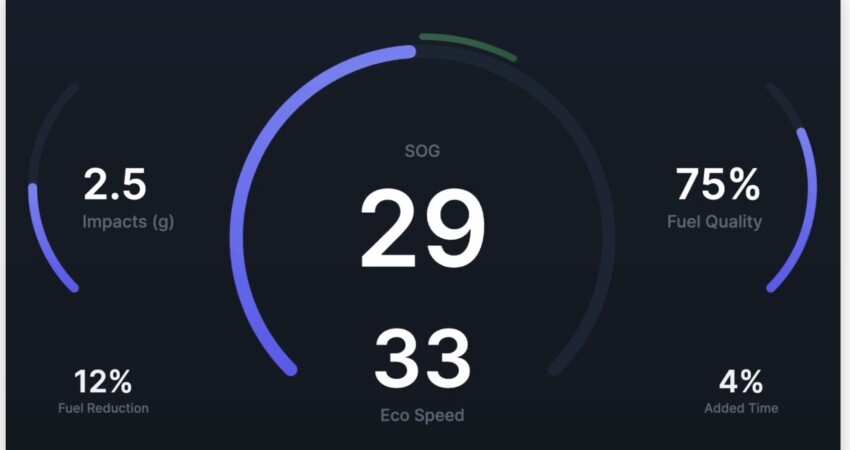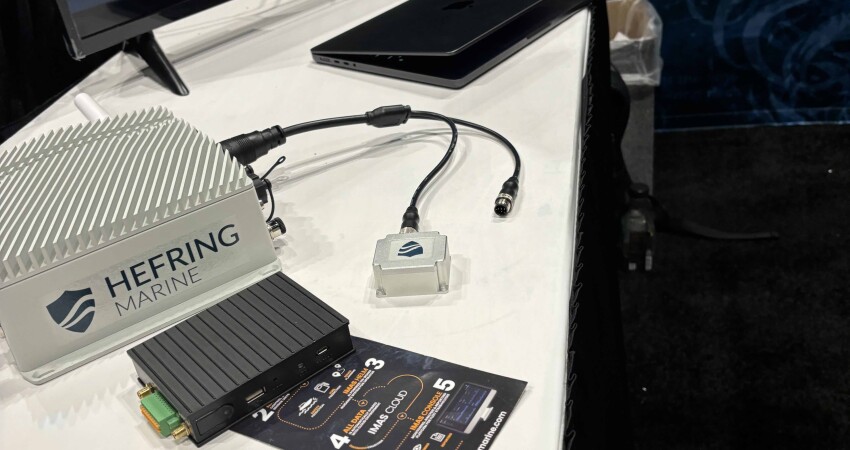Among the new companies bringing analytic software to fisheries, the Icelandic-based Hefring Marine displayed its innovative vessel management and safety system at the 2024 Pacific Marine Expo for the first time. While Philip Miller is handling the company’s business development in the U.S., product expert Jonathan Osterberg joined him in the booth to explain the particulars of Hefring’s Intelligent Marine Guidance System (IMAS™).
“This unit receives all the data from your NMEA (National Marine Electronics Association) connected devices,” says Osterberg, indicating a small white unit on the display table. “It’s also connected to this IMU (Inertial Measurement Unit), which is a motion and orientation sensor that tracks the motion of the vessel at all times. If I were to throw it across the room, you could see its track on a computer display.”
As Osterberg describes it, the Hefring Marine software is doing several things simultaneously and delivering information to multiple recipients in real time.
First, it tracks the motion of the vessel in real time and maintains a log of the vessel’s motion. “In one case, after a significant impact of approximately 8g (7.8 gravitational force) on a vessel equipped with IMAs, unexpected structural damage occurred,” says Osterberg. “This included issues with the engine mount and the welds of a beam. Using the data collected by our system during the impact, the boat builder was able to identify and address the structural weaknesses in the boat model, leading to improved design. Additionally, the data proved invaluable for insurance claims, as it clearly demonstrated that no reckless driving occurred leading up to the incident.”
Besides gathering data on hull performance that can be of future help to vessel designers, the Hefring software is designed to help captains make better decisions in real time, and vessel owners make better decisions over the long term.
Onboard the vessel, the Hefring system sends information to a small, simple wheelhouse monitor that displays optimum vessel speeds for safety and fuel efficiency, as well as warnings based on speed and vessel orientation.

“The information can also be sent to a larger, more detailed computer display onboard and onshore,” says Osterberg. “If the vessel has a satellite connection like Starlink,” the unit can transfer data that way. “But if they are operating close to shore, there is a SIM card slot here in the back.”
Using AI analytics, the software helps vessel owners and operators determine the most efficient operations profiles. The system also monitors the impacts and vibrations a vessel experiences as it moves through the water. “These are displayed in real-time to the operator, and they receive alerts on board and on shore when an impact threshold is exceeded,” says Osterberg. “And an impact counter records the number of times the threshold is exceeded.”
The impact and vibration monitoring and other features of the Hefring system fill in some of the gaps left by others. Researchers have observed that operators receiving real time information on fuel efficiency and safety improve their fuel efficiency, and operators who receive personalized information improve even more. Hefring is taking advantage of this aspect of human nature to create captain profiles that can be used to deliver more personalized information to those captains.
“At Hefring, we are filling in a number of gaps left by other systems,” says Osterberg.







